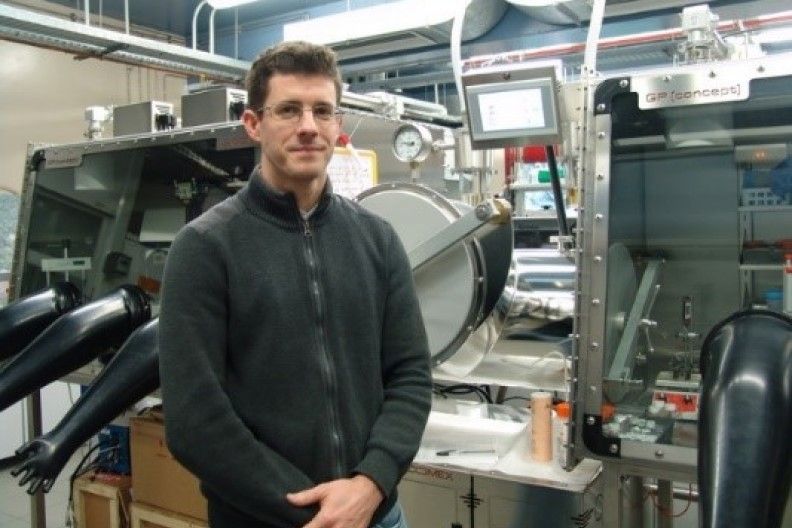Alexandre Ponrouch

Battery technologies with a focus on metal anodes (Li, Na, Ca and Mg), passivation layers and interfacial processes.
Field of interest:
In the framework of a European Research Council (ERC) grant (CAMBAT, “Ca and Magnesium metal anode based batteries, proposal ID: 715087, budget: 1,688,705Euros) I setup a laboratory in ICMAB focusing on fundamental electrochemistry and dedicated to metal anode and interfacial phenomena.
Currently, I am mostly interested in parameters affecting the safety and electrochemical performances of metal anodes (Li, Na, Mg and Ca) such as the properties of the passivation layer being formed at the electrolyte / electrode interface (stability, composition, morphology, etc.) as well as the nature and mobility of electroactive species in the electrolyte (liquid or polymer).
Capabilities:
These parameters can be investigated by means of several electrochemical methods including: impedance spectroscopy, voltammetry, electrochemical quartz crystal microbalance, assembly of symmetric metal//metal cells.
Other characterization techniques are also commonly used such as infrared, high resolution transmission electron microscopy, In-situ X-Ray diffraction, scanning electron microscopy, thermal analysis (TGA and DSC), etc. All electrochemical tests can be performed inside an Ar filled glove box and / or using Swagelok or coin-cells in climatic chambers or thermostatic bath.
Interface engineering of electrode can also be performed using either pre-electrochemical treatment in selected electrolyte in order to tune the nature and properties of the electrode interface and / or by means of carbon coating. The latter is performed using physical vapor deposition (see: A. Ponrouch, et al., Energy Environ. Sci. 6 (2013) 3363). This being done at room temperature and without any solvent it is applicable to virtually any material (including powder, thermally and/or chemically unstable materials).